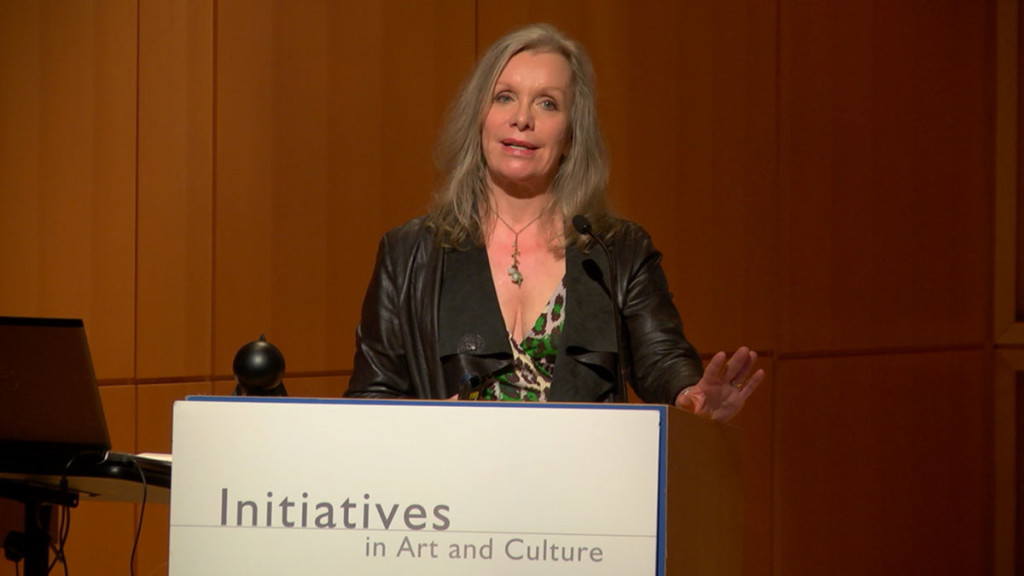How to Market to Both Boomers and Millennials

Karen Alberg Grossman shares marketing tips from two experts who spoke at a recent Arts and Initiatives conference in NYC: Pam Danziger on Millennials and Peter Hubbell on Baby Boomers.
According to Pam Danziger of Unity Marketing at a recent Initiatives in Arts and Culture conference in NYC, millennials are skeptical about the “luxury” label.
“This is a generation of tech-savvy consumers, raised on the Internet, cable TV and trained to see through advertisers’ tricks,” she said. “When they hear the word ‘luxury,’ they tend to think of something overpriced and hoity-toity…”

According to Danziger and Unity Marketing research, customers’ likelihood to buy is a function of four main factors: need, product features, affordability and emotion. While marketers have little control over customers’ needs, they have tremendous control over their desires. Emotions, says Danziger, are the deal-maker: they magnify each of the other factors driving shoppers to purchase. Emotions transform needs into desire; emotional responses induced by store environment affect the time and money consumers spend in the store.
In her seven steps to increase customer involvement and time in the store, Danziger suggests that retailers:
1) Engage and involve customers; encourage them to touch, taste, try on.
2) Evoke curiosity, perhaps via a gallery-like setting.
3) Create an electric quality to the store. This starts with the staff who must be excited to be there and spread their positive energy to customers.
4) Convergence: Store design, merchandise and atmosphere should combine to create a single harmonious experience.
5) Be authentic: The store, the product, the people, the story must all be genuine.
6) Consider price/value equations: A broad range of price points is generally an asset.
7) Be accessible: The store should never be pretentious or intimidating.
A few other tips: Keep your focus on what makes your store special; always lead with this point of difference. Tap into community spirit: reach out and make connections. Tell your story: how products are crafted, curated, where they come from, what they mean.
Bottom line: tell stories of what luxury product will do for your customers, how it will make them feel, but avoid using it as a label.
“Boomers are marketers’ most valuable generation. Ignore them at your peril.”
Peter Hubbell, author of a new book called Old Rush: Marketing for Gold in the Age of Aging, noted that in Japan, there are more adults wearing diapers than babies wearing diapers. In less than five years, 50% of the U.S. adult population will be 50 and over. For the first time in world history, adults 65+ will outnumber children under 5. By the year 2030, 25% of Western Europe’s population will be 65+. By 2050, more than 25% of china’s population will be 65+. (Today, China has 200 million people who are 50+).

As most marketing execs already know, the over-65 demographic controls 70% of all disposable income in the U.S. as well as $15 trillion in inheritance. A good 25% of this demographic is not planning to retire. Older adults spend $3.5 trillion annually, 45% more than the prior decade. But with 10,000 Boomers a day leaving traditional jobs, growth in the entrepreneurial sector is projected.
Although our society (and Madison Avenue) clearly covets youth, Hubbell maintains that Boomers are today’s marketers’ most valuable generation. “Ignore them at your peril!” he insists, pointing out that they spend $3.5 trillion annually whereas younger adults spend at least a third less ($2.3 trillion). He also notes that younger adults are delaying marriage and kids and that “many will delay the elusive American dream just to get a nap!” The bulk of millennials will not enter their peak earning/spending years until 2030.
His best practical advice about marketing to Boomers: It’s not about selling stuff; it’s about getting people to buy stuff. So know the facts, know who you’re talking to, and make sure your message is clear.
1) Inspire to create desire, not demand.
2) Inspire their spirit: seduction is part of the equation.
3) Be irresistible: it’s a pleasure-seeking generation and they will spend to indulge.
4) Emphasize quality of life: they will spend to enhance this, and to validate their self-image.
Remember, Hubbell concludes, aging is the contentedness of a life well-lived; it’s about well-being, joy, personal growth… And interestingly, with today’s life expectancy approaching 80, old age is now defined as anything over 72.


